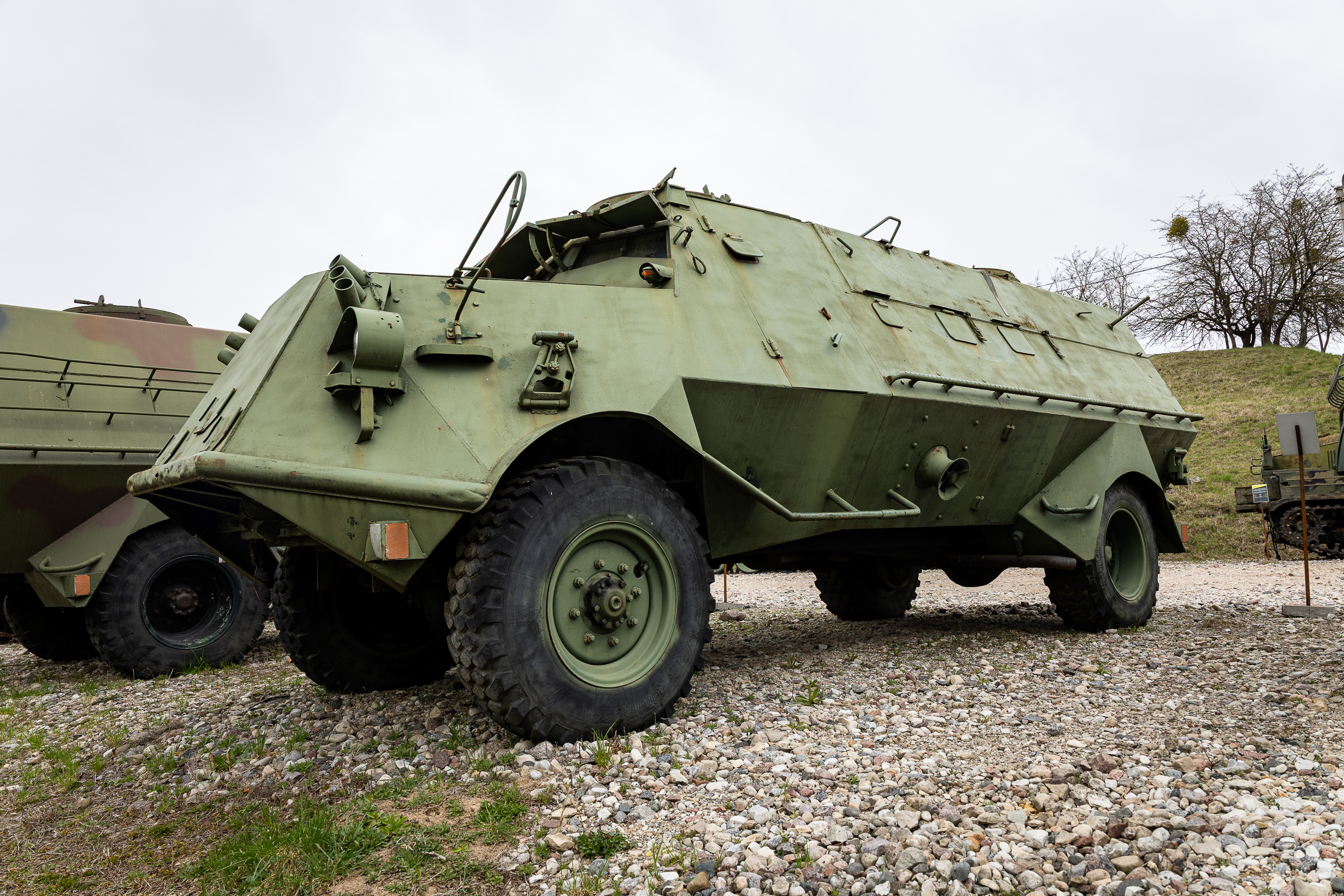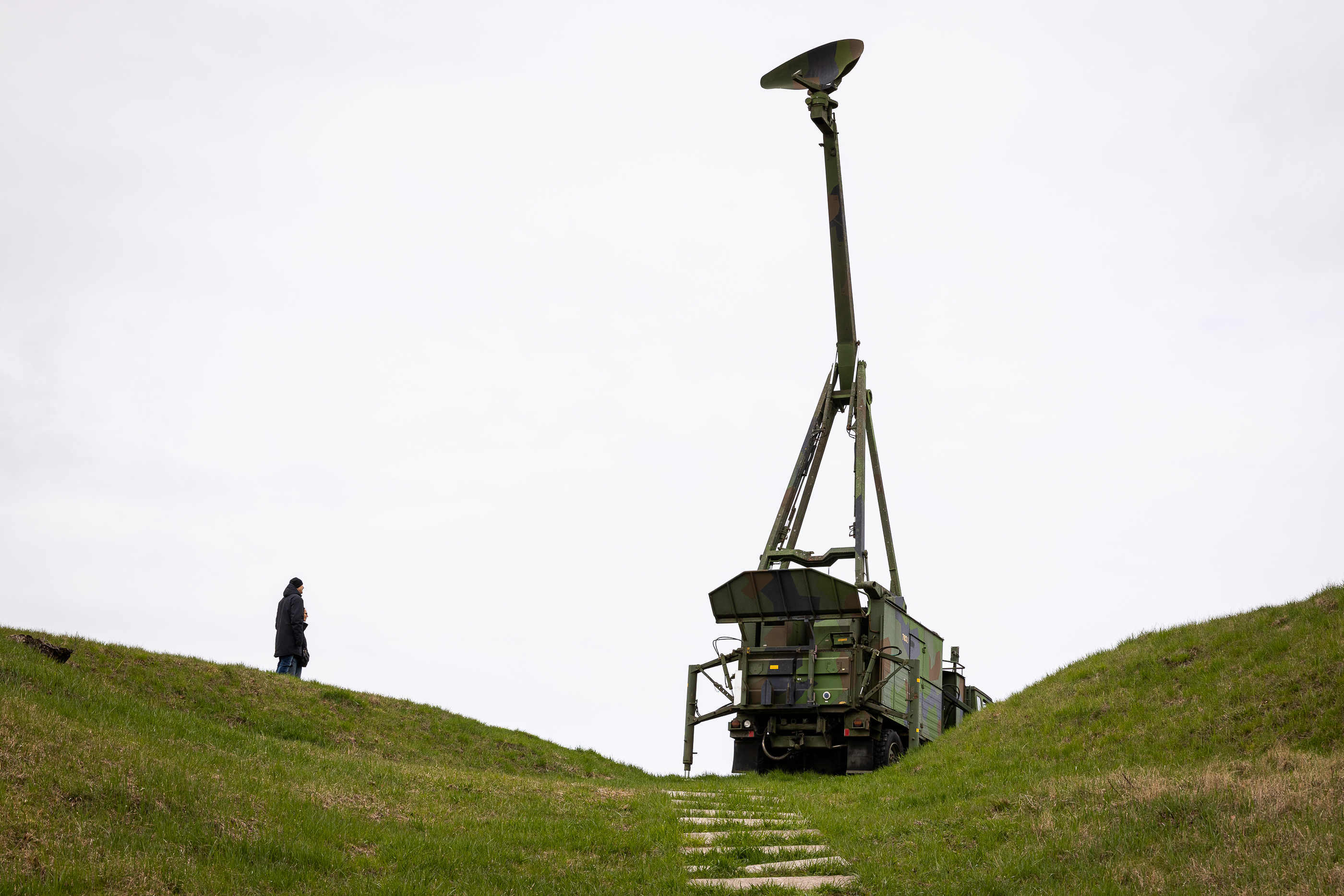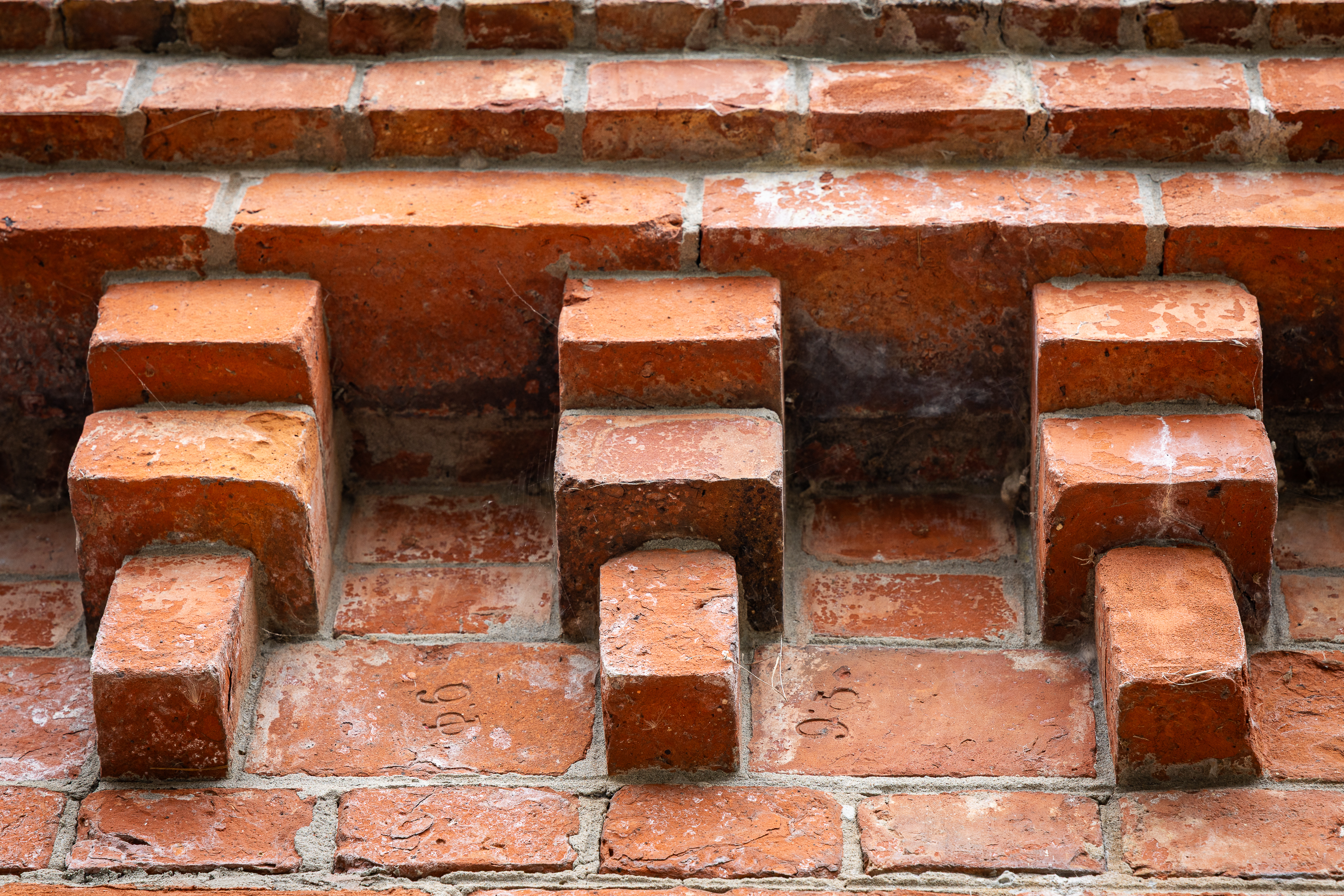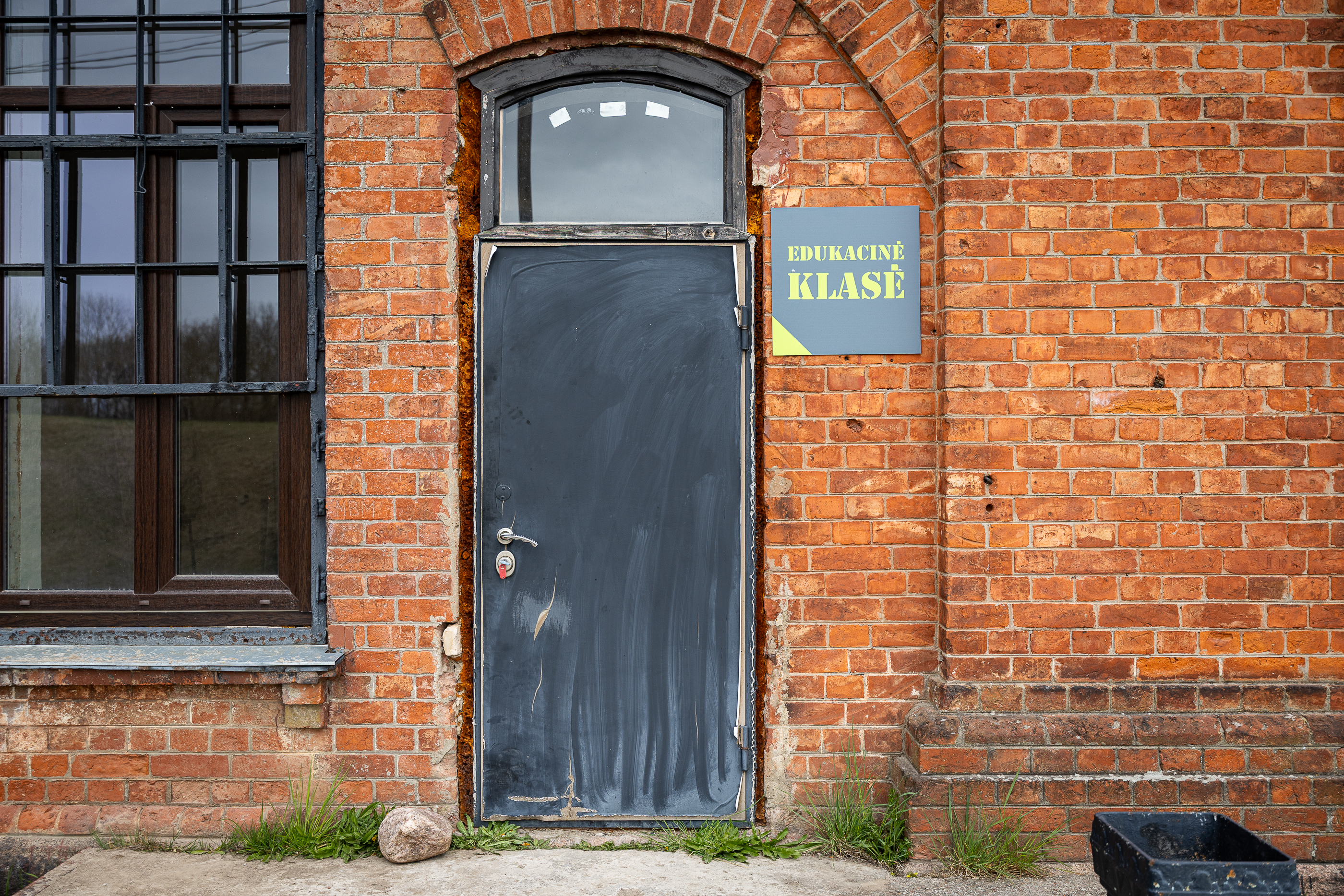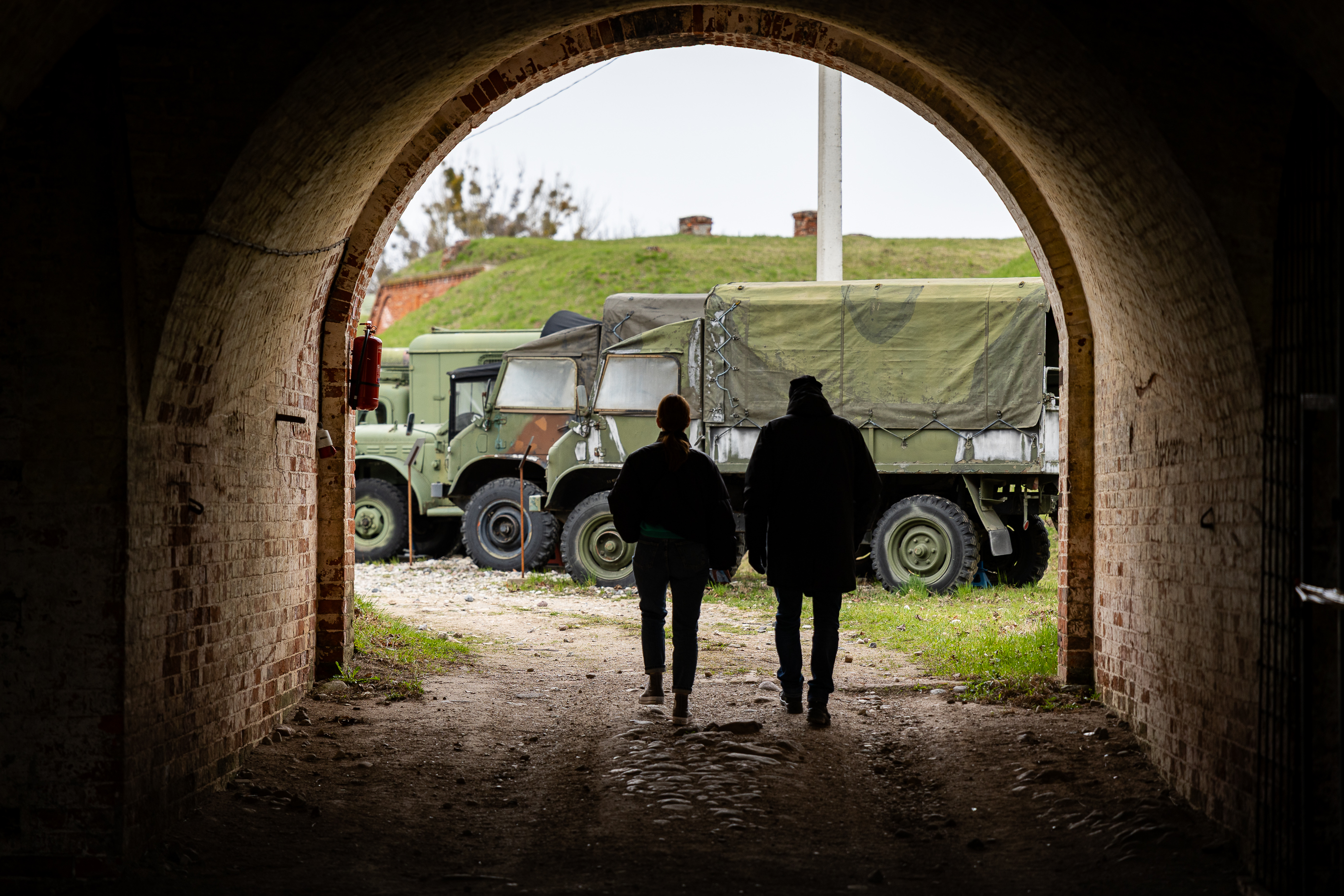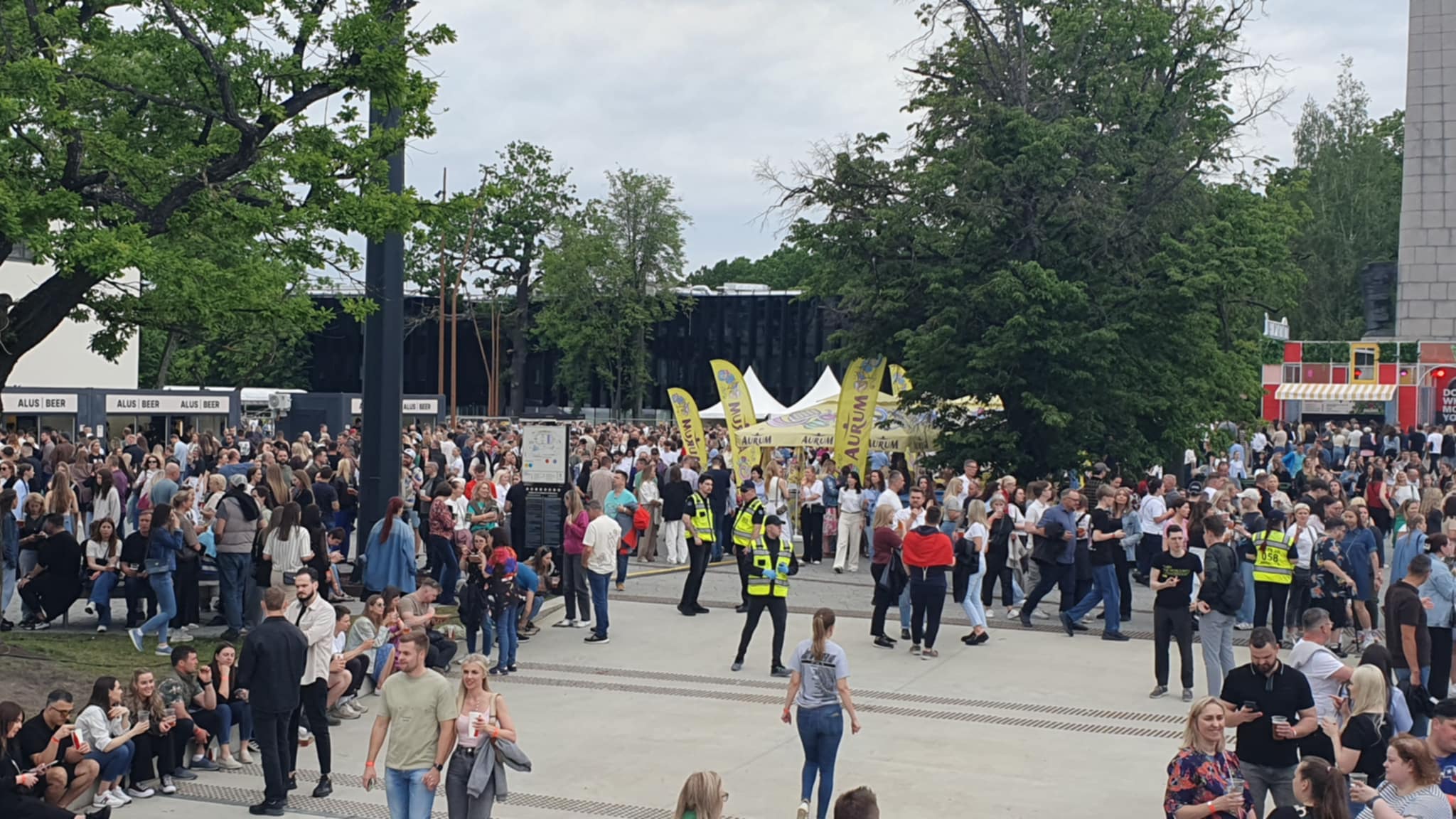In the Military Technical Exhibition, from heated trucks to « giraffe »
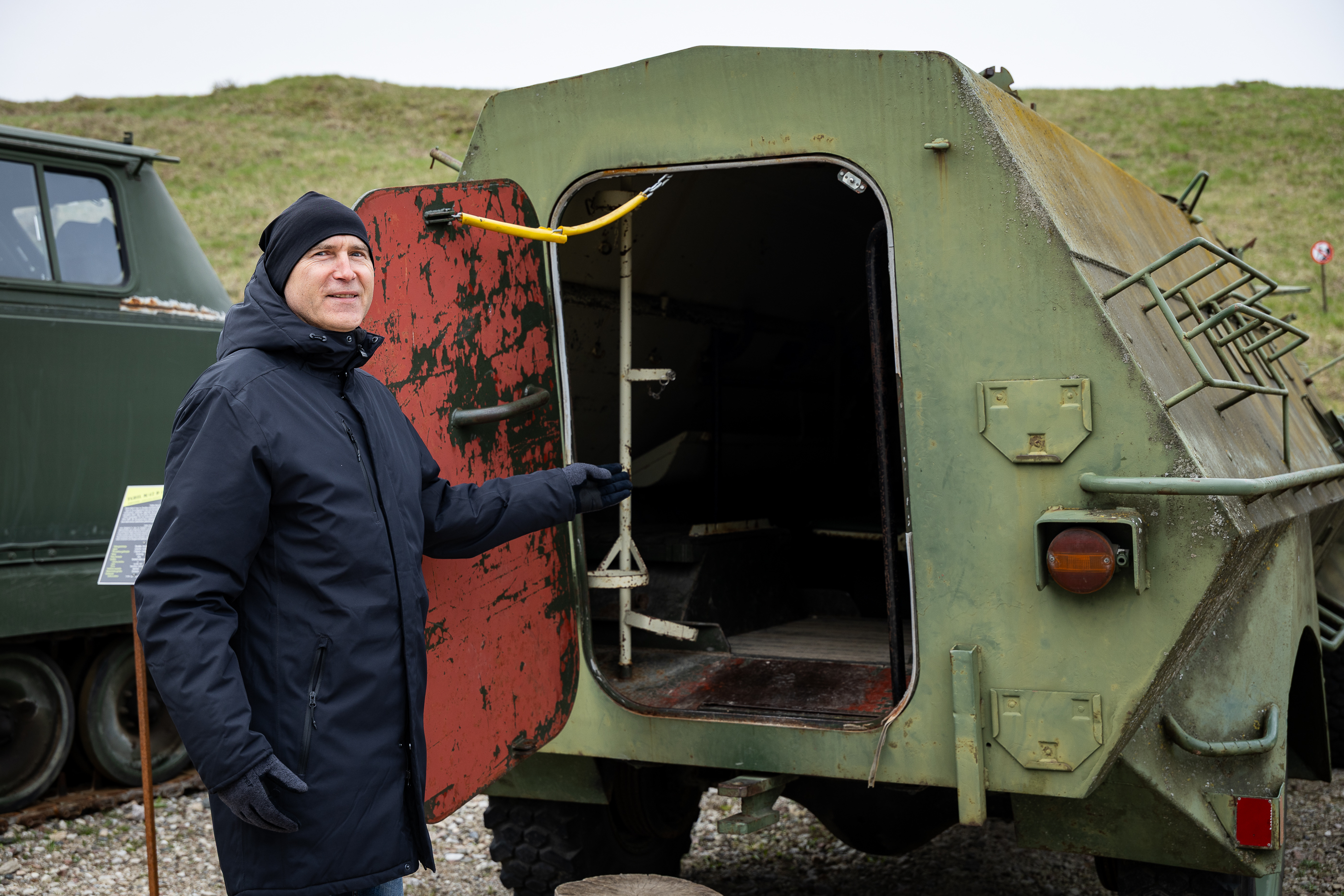
White elephants
« Hi, please come, » – after opening the gate, which can only be accessed by a pre -registration and accompanying person, Gintaras Liaudnskas, a museum of the Education Department of the Vytautas Magnus War Museum, invited inside.
One of the reasons why the military equipment exposure cannot be freely visited is explosives left since the Soviet era, when the ammunition warehouse was still in operation. Two years ago, when the grass was cut, the Soviet Mine of the Military Gun was found at the fossa of the fort, the military semicircular, which was neutralized here by the soldiers of the Colonel Juozas Vitkus Battalion of the Lithuanian Armed Forces. The accompanying person during excursions is also necessary. During the day, an exposition consisting of wheeled, tracked technique, artillery guns, boats and planes, visited by hundreds of visitors and far from all obedient. For unnoticeable warning tables, museums remind that climbing slopes should not be climbed, and that it is strictly forbidden if the military equipment is locked.
Professional: G. Liaudnskas more than anyone else knows about the technique on display, so he could talk for hours. Photo by Regimantas Zakšensk
« You can climb here, » – G. Liaudnskas entered the caterpillar technique and clicked the door handle of the « Terrängbil M/42 KP » used by Polish exotic exotic exotic exotics.
After the restoration of independence and the restoration of troops, Sweden was one of the biggest sponsors, so these armored vehicles came quite early. 1993 For Lithuania, Latvia and Estonia, the Swedes devoted thirteen armored vehicles as charity. In the Lithuanian Armed Forces, they were all used only in the Lithuanian Grand Duke Kęstutis Infantry Battalion in Tauragė district until 2001.
Served for Lithuania
The first armored vehicles of Terrängbil M/42 KP reached Swedish soldiers in 1944. As usual for that era, the armored vehicles were quite simple structures – a truck chassis mounted on a truck chassis. The first modifications were semi -open, covered with a tarpaulin, only later, in 1983, completely armored. Interestingly, about 7 tons of weight, up to twelve soldiers, were produced by two famous Swedish manufacturers – Volvo and Scania.
Accent: Terrängbil M/42 KP is one of the most spectacular exhibits. Photo by Regimantas Zakšensk
« The armor is sloping for bullets, in some places of different thicknesses. Two machine gun could be installed in the armored vehicles – at the front and back. On the sides – the shooting openings, » G. Liaudnskas opened one, and then stood up and opened two hatches, one of which was installed in the driver’s cabin. There is no protective turret in the armored vehicles, and the machine guns shot through the hatch without a cover. As a result, they suffered the most.
« It was an armor created during World War II. Terrängbil, translated from Swedish, off-road machine, and the number 42 shows years of creation, 1942. In the name of the CP, the Karosser Passar – an armored car. Thus, Terrängbil M/42 KP – 1942. Model’s armored off -road car, ”the tour wizard encrypted the name.
In the history of world warfare, these armored vehicles are better known from the 20th century. Congoes of the 1960s. They were equipped with the Swedish, Irish and Indian peacekeepers who participated in the United Nations Peace Mission. In Africa, the armored vehicles were painted in white, marked with un letters. Probably due to the color and peculiar appearance of Africans, armored vehicles called white elephants. Because of the same peculiar form, Swedish soldiers called armored vehicles as coffins. About 0.5 thousand were made of these armored vehicles. As far as Swedish museums are known to be known, there are three, and visitors can see two armored vehicles at the Vytautas Magnus War Museum Military Exhibition.
In the exposition, the « giraffe »
In the VI Fort, more Swedish techniques are also protected under the open air. Suppose a compressor, a water heater, a concrete mixer, a two-piece-driven four-tracked-driven, up to seventeen-person-tracked tracked SUV SUV Bandvang-206 or soldiers and small cargo transportation, donated by the Swedish government, 2002-2006. The Volvo Cross Country TGB 21 was operated by the Grand Duke of the Lithuanian Armed Forces Kestutis Infantry Battalion.
Similarity: Review radar is not in vain called a giraffe. Photo by Regimantas Zakšensk
« See: heated seats, seat belts, and we are talking about 1974! We couldn’t even imagine such a thing. The technique was exceptional, adapted to the Nordic region. PS-70, a pulsed-degradable and denoting radar. There are several modifications of them, the common feature of which is the folding stem that lifts the antenna above the terrain. The radar antenna, as Amber said, rises to 12 m, the unit’s operation distance is 75 km and height is 10 km. 2000 In September, the first armament for the Lithuanian Armed Forces was presented from Sweden to Klaipeda – eighteen systems M/48. The system consisted of a car-mounted base review radar PS-70, fire control radar and automatic zenith cannon. The technique for transporting armament was also received. 2010 In December, Sweden handed over ten more PS-70 radars to the Lithuanian Armed Forces.
Exclusive: These bricks were made specifically for the VI fort. Photo by Regimantas Zakšensk
« Because of its specific antenna construction, this review later became widely known as the PS-70 GIRAFFE. Military jargon is a giraffe, ”G. Liaudnskas stood up in a place that is best visible to the African long -necked similarity to the device that served the Lithuanian Air Force, and now the sky is in the territory of Kaunas Fortress VI fort.
Education is also taking place
There are more than 250 exhibits in the exposition launched since 2008. These include wheeled and caterpillar techniques, airplanes, speedboats, light frigate « Aukštaitis » maritime guns, logistical and engineering technique, motorcycles, radio, wired communication equipment and other museum values. The vast majority of this military equipment were used in the Lithuanian Armed Forces at various periods. Most of it in the US, Sweden, Denmark, Poland and other countries transferred to the emerging Lithuanian Armed Forces free of charge, and more used equipment was purchased from these countries in a later period.
Interestingly, the educational classes contain finds and other exhibits in the fort. Photo by Regimantas Zakšensk
The most spectacular, memorable museum values are Swedish armored vehicles, DAF V1600 BB movable hospital, Star 660 with equipment for outdoor manufacture of bread products, M-113 infantry fighting machine, Land Rover Defender 110, P-40, PRV-16, An-2, Su-7 fighter, Tiunomey fire trucks, Zaporozo passenger car passenger car purchased from government reserve funds for national defense purposes.
More than an hour can be heard from the guide how the Lithuanian Armed Forces technique changed and improved, how the BTR 60PB armored vehicles were moved to modern Western equipment, what kind of machine liter, tones, all equipment came to Lithuania.
« We are not only guided by tours, but education. Particularly high interest in schools is that children are curious to hear, try, » says time, according to G. Liaudonskas, for the youngest visitors, even when it comes to the fort and its history.
Order: Access to the Military Technical Exposition can only be pre -registered, and to walk around the area only with a museum artist. Photo by Regimantas Zakšensk
Walking around the area, visitors to educational visitors find out who needed to turn Kaunas into a fortress at all, how the forts were built, how and the functions of the various buildings, ditches and embankments of the fort, and what the fort was used at various periods.
« Another interesting detail is the authentic bricks marked with the letter F and the number 6. This means VI Fort, » G. Liaudnskas finished the walk at the ticket office.

